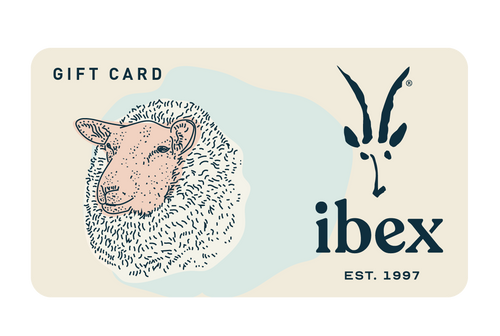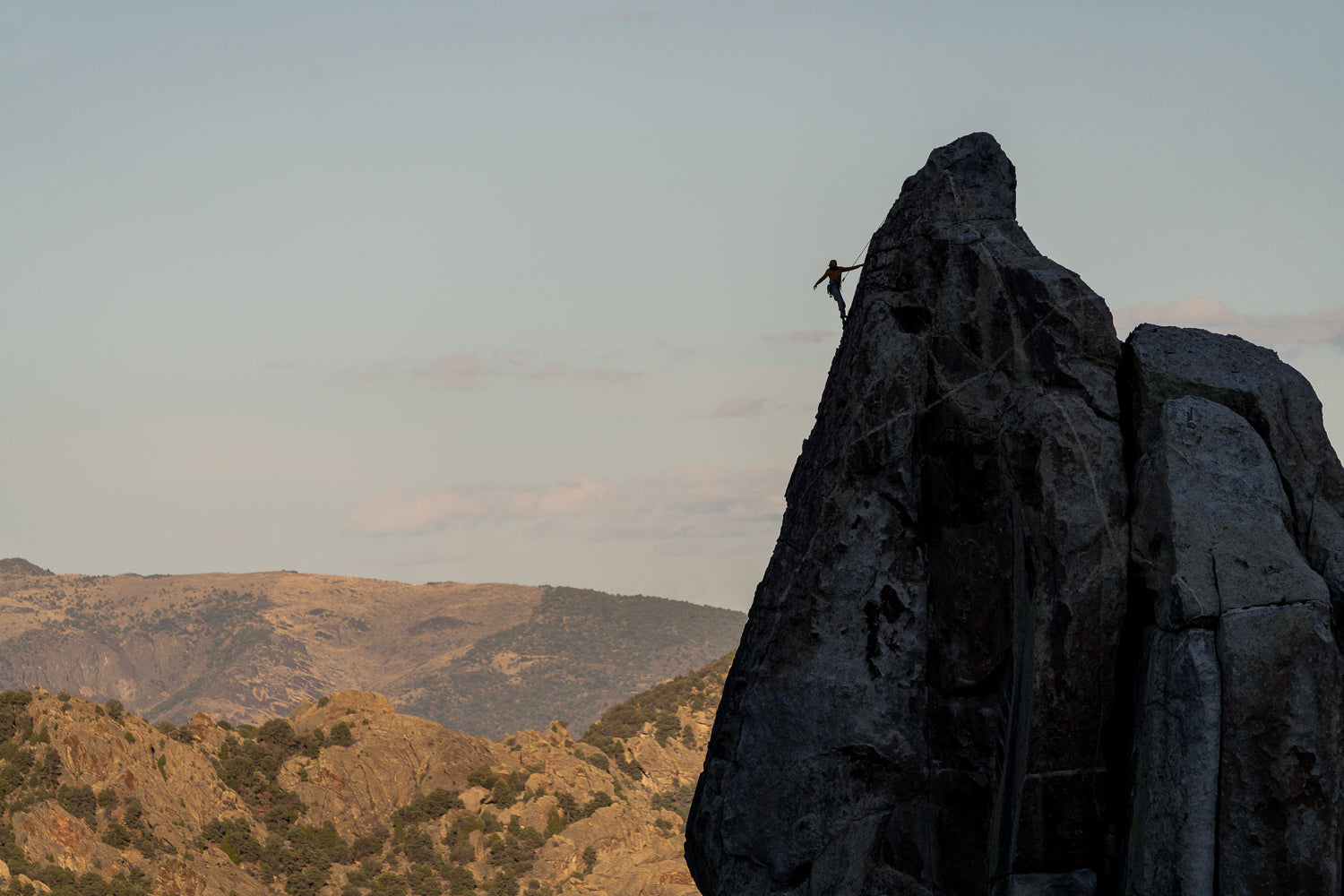Reflections From My First Hunt
With Ibex ambassador, Heidi Nixon
Heidi Nixon 〡 Oct 1ST, 2024
Just before 7 a.m., I meet Sam under the broken streetlight at Sitka’s downtown harbor. Three brown bears roamed these docks a few days ago in the wee hours of the morning, looking for scraps. There’s something about the cold and dark of fall setting in that has all the animals — ourselves included — motivated to stockpile food for winter.
Today, our minds are on Sitka black-tailed deer. Native to the coastal rainforest we live in, these deer can be harvested six months out of the year, giving Alaska residents one of the best chances at filling their freezers. Subsistence hunting and gathering is a way of life here, thanks to the local Tlingit people who continue to lead by example. The astronomically high prices at the grocery store make it even more enticing.
Sam, like many others in Southeast Alaska, is hoping to gather as much meat as possible to feed his family of five. He’s also dealing with a pesky leg injury and has invited me to join him on this hunt—with the understanding that I’ll be carrying all of the weight. Growing up in a Canadian family that only observed guns from behind a TV screen, I feel honored to tag along. One of my goals this year is to harvest my first animal, so we’re both grateful for the symbiotic relationship that formed at the local treatment center, where we met while working as substance abuse counselors.
We climb into his 20-foot aluminum boat, more commonly referred to around here as a “skiff.” Although it’s still dark, the moon reflects off the ocean like a spotlight guiding our way north. It’s not long before we see the familiar plumes of humpback whales, and we idle in silence as a pod of three passes within feet of the boat. About an hour later, we’re on shore, hauling our gear up the slick, rocky beach in our matching camouflage rubber rain gear.
Sitka black-tailed deer hunting—unlike some other forms of deer hunting—is an active endeavor. We’re hiking (read: bushwhacking) to about 1,300 feet and scouting for deer along the way. This island is home to over 1,000 coastal brown bears, making it one of the most densely populated bear areas on Earth. It’s not long before we spot one crossing the creek, headed our way—but a quick yell to alert it to our presence sends it running in the other direction. These bears are carnivores: they gorge on fish all summer, then turn their appetite to deer in the fall. Right now, it’s October, and we are competing apex predators.
A few hours in, still without spotting a deer, we stop for lunch in an old-growth forest and decide to try calling one in. We’re using a locally made deer call—a small piece of wood, similar to a whistle, that mimics the sound of an injured fawn or female deer. Deer calls are used to entice bucks into the vicinity; they work best during the rut, but they can also, unintentionally, call in bears. Today, we’re unlucky—and the only response we get is from the latter. Almost instantly, I hear what I can only describe as a hysterical, huffed cackle and turn around to see a 1,000-pound blur of fur and muscle charging toward us. Within 20 feet, it catches our scent, turns, and veers down the trail we had just come up, leaving Sam and me stunned. The image of its massive bicep muscles rubbing against its thick chest with each galloping step will stick in my memory longer than I’d like.

Bear tracks on beach

Hiking through the dense rainforest

Fall colors blanket the floor of the Tongass National Forest, the nation's largest forest
We push on, knowing that if we turned around we’d be heading in the direction of the bear. We make noise for a while, abandoning our silent stealth mode. Hiking along for another hour, we come upon a buck that is unbothered by our chatter and offers a perfect shot. I duck down and cover my ears as Sam aims and fires. A clean shot drops the deer in its tracks. We spend the next half hour quartering the animal as efficiently as possible, taking turns standing watch and hollering for the potentially hungry nearby bear.
.

We are six hours in at this point, and decide to begin our descent. Stepping over downed trees, we come across two more deer that stand and watch us for long enough that I decide to go for it. I hold the rifle up, taking some deep breaths. I locate my target through the crosshairs of the scope ; I’m aiming for just below the head. A few more deep breaths, I gently pull the trigger like I’ve been taught. The deer drops, and the other one runs away. We slowly approach and find a dead buck with a shot placed exactly where I wanted it. With darkness encroaching and a bear potentially still in the area, we don’t linger for long. We gut and quarter the deer with haste, taking care to not waste meat, while recognizing the risk we have chosen to expose ourselves to today.
The rain pummels us, soaking through our hats and drenching my hair. My rubber rain gear has the breathability of a clogged snorkel, but at least it keeps me mostly dry. Under my thick rubber overalls and jacket, I wear a thin wool base layer top and bottom. If there’s anywhere in the world to avoid cotton, it’s southeast Alaska, and today I am grateful for quality gear that allows me to push my limits.
Arriving back at the beach, we are stoked to see the boat but quickly realize there are whitecaps on the water. The weather is presenting differently than the forecast, and we both know from the sea state that we are in for a wet and rowdy ride home. As soon as we push off the beach we're taking waves over the bow of the boat, soaking us from head to toe, as if we’re at a waterpark sliding down the last part of the log ride, where the water accumulates and splats onto your face. We seriously consider turning back and hunkering down at the nearest cabin but a break in the waves allows Sam to push through toward home. A humpback breaches in the distance and I can’t help but laugh out loud, despite the fear that I feel lingering after a wild day.
Land has never felt so good as we finally pull up and unload at the dock with sighs of relief. The work is not done, as we have two deer in my backpack that need tending to. We split the meat up and I take my portion home. I am exhausted, elated, and feel incredibly grateful. This adventure and the venison meat will feed me for the next few weeks, and I look forward to sharing with friends, as is customary in small town Alaska.

Heidi MacDonald-Nixonis was and raised in Canada, Heidi now lives in Southeast Alaska. Her passion is backcountry skiing, choosing to forego lift tickets for the last 5 winters in order to prioritize earning turns in remote places. She spends many weeks per year in the field through her work as a NOLS instructor (@nols_alaska) and avalanche educator. She also works in the mental health field, advocating for the importance of time in nature as a form of healing.. Follow her journey and work here @heidi.nixon
Heidi'S favorite hunting layers:

Woolies PRo Tech
Crafted using Nuyarn® technology, a twist-free spinning method designed to amplify the inherent performance of merino wool. This ultra-lightweight base layer fabric offers a remarkable 35% improvement in thermal efficiency, making it an ideal choice for various climates. Pro-Tech surpasses its traditional ring-spun counterparts with an astounding 8.8 times increase in durability and an impressive 85% boost in elasticity. Experience unparalleled comfort and longevity with our Pro-tech fabric, a testament to innovation and quality in every thread.












